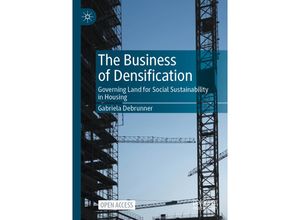Affordable housing shortage and social exclusion have become severe societal problems across
the globe. Increasing numbers of people are suffering from social eviction and displacement due
to urban densification modernization rising rents and intense housing commodification.
Vulnerable resident groups - such as old-aged or households with children - who often live in
old housing stocks planned to be densified renovated or upgraded with higher rents are
forced to leave the urban core centers because they can no longer afford to live in central
locations or because they experience unstable or insecure housing conditions. A scenario that
is highly unsustainable. So far studies on densification have mainly considered the process as
technological architectural or design-based problem (e.g. Kyttä et al. 2013 Broitman &
Koomen 2015 Bibby et al. 2018). However systematic knowledge on how to implement
densification objectives sustainably - regarding economic environmental and social aspects -
is still lacking. This book tackles this gap by analyzing densification from a governance
perspective. Its point of departure is that densification per se does not necessarily lead to
sustainable outcomes in terms of social inclusion cohesion or community stability. Rather it
politicizes densification by neglecting how the process is planned implemented and governed
by the actors involved. The book applies an actors-centered neoinstitutionalist political
ecology approach to reveal the specific objectives and strategies of actors involved as well
as the socio-political structures (i.e. rules. laws and policies) that govern densification.
Four Swiss in-depth empirical qualitative case studies (Zürich Basel Köniz and Kloten)
illustrate the political and legal conditions for success or failure for (un)sustainable
implementations of densification. Ultimately this book advises stakeholders governments
urban practitioners and academics on more effective community-oriented collective and
decommodified forms of governance to respond to the needs of the public at large rather than
simply catering to private individuals and firms. Such governance initiatives entail active
municipal land policy approaches outside a purely market-based investment logic that not only
limit but also work with property rights. This is an open access book.

